 Germany (1939) Aircraft Carrier, 90% completed.
Germany (1939) Aircraft Carrier, 90% completed.
Germany’s aircraft carrier
Contrary to most European powers, Germany never ventured into the Aircraft carrier genre, bar perhaps a few ad hoc conversions as seaplane tenders. The appearance and raid of HMS Furious on a Zeppelin base in 1918 was duly noted by the German admiralty, but it occurred far too late in the war to devise any response. At the time, the only “carrier” like projects the Germans looked into was directly for their airship’s ability to deploy fighters for self-defense. Thus, it was only until Plan Z that new ambitious carriers were planned, with only one of the four planned being laid down, named after the famous count Zepplin himself.
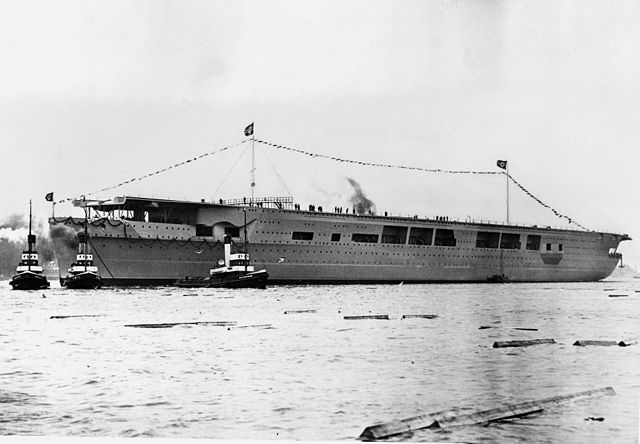
Graf Zeppelin being launched in December 1938
Plan Z
While the initial renewal of the Kriegsmarine included as an objective the control of the Baltic, and to be able to sustain a war with France (her fleet was mostly in the Mediterranean) Hitler, increasingly confident, decided in 1938 he wanted also the possibility to take on the Royal Navy in a war scenario with the UK in its home waters. For this, Plan Z (the third proposed by the Admiralty), the most ambitious one drawn up yet, was approved in January 1939.
This was a considerably more ambitious endeavour, than anything the German navy had attempted before, with a plan for 800 ships, including 4 aircraft carriers, 10 battleships (two of which were realized in the Bismarck class), 12 battlecruisers, 3 armored ships (which saw light as panzerschiffe, though were supposed to be an improved Deutschland class), 5 heavy cruisers (becoming the Hipper class, with all being built), 44 light cruisers (M-class cruiser, none), 158 destroyers and torpedo boats (about 50 destroyers and 48 TDs), and 249 submarines (though much more were eventually built). By the beginning of the war, despite the creation of M-class cruisers, H-class battleships, and O-class battlecruisers just being started, Plan Z was just 20% complete. In all that, the Graf Zeppelin was the first of its class but was also started way before Plan Z was approved, back in 1936.
Genesis of the Graf Zeppelin
Building an aircraft carrier from scratch was not an easy endeavor. At least the first enemy targeted, France, had some experience with seaplane carriers in WW1 and had converted a Washington-banned battleship, Bearn, into its first aircraft carrier in the 1920s, gaining considerable experience. All the top three best navies also had many carriers already in service and planned more. Initial research for the design could be found in Wilhelm Hadeler, a member of the Kriegsmarine construction department, who followed with attention the carrier development in other countries, in particular the UK.
There were heated discussions as naval aviation technology leaped forward a considerable way in the 1930s, and the lack of anything resembling pilot training for naval operations in Germany was a concern too. Everything was to be done from scratch. The first sketches were presented to Hitler in 1933 and 1934, and planning was made for a 22,000-tonne, 35-knot ship with 50 aircraft. Eventually, with the Anglo-German naval agreement, Hitler felt the time had come to authorize these ships and fixed the tonnage to 19,250, about 35% of British carrier tonnage.
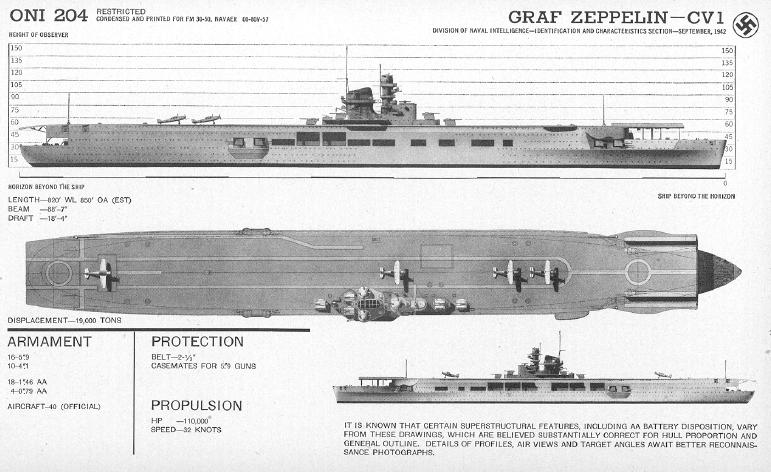
US Naval intelligence 1942 recoignition plate.
Design
The design had to be reworked to keep much of the original specs. Eventually, before construction started, technical design studies were given to a special setup at Deutsche Werke AG design bureau. The final specs were finished in close cooperation with the Kriegsmarine’s construction department and assistance from the Luftwaffe, though the latter was anything but enthusiastic about the project and never specified requirements for their aircraft.
The general opinion of the day was an aircraft carrier was to be able to defend herself, and she was aligned on that of a heavy cruiser in terms of armament and protection. Later the requirement for a secondary battery also included preventing night attacks by destroyers and thus a battery of quick-firing 150mm guns was added. HMS Furious was visited in 1935 (a waste of time according to the report) and another delegation made a more fruitful trip to see the IJN Akagi, helping to confirm the design path. Eventually, the blueprints were ready and construction approved.
Construction
As the cornerstone of a future blue water navy, and the lead ship of a class of two sisterships, “A”, was approved in 1935 and on 16 November 1935 a contract was awarded to Deutsche Werke shipyard in Kiel. However at that time, the largest slip was occupied by Gneisenau, so construction had to wait for it to be cleared, which, on the bright side, left time to refine the blueprints. The navy also tested models of elector-hydraulic lifts while the Luftwaffe constructed and tested an arrestor system at Travemünde. In total, 2500 tests were made and the design was refined until completion. To cope with wind pressure on such a tall hull, German engineers added retractable Voith-Schneider propellers in the bow for extra handling maneuvers. To prevent aviation fuel fires, tank fuelling systems’ non-liquid filled parts were filled with dry gas while serving pipes were surrounded by inert gas pipes. In addition, sprinklers were added in all hangars.
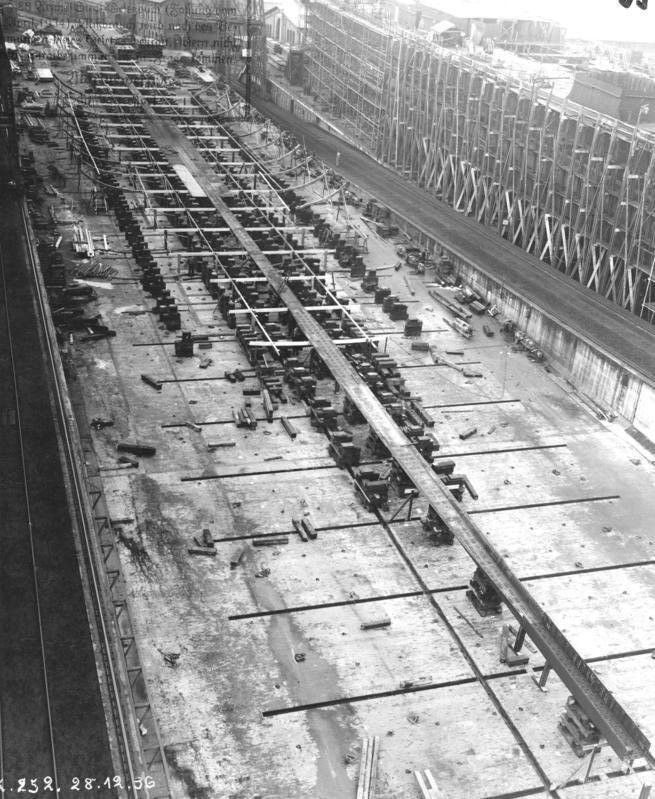
Flugzeugträger “A” keel in Kiel AG, 28.12.1936
Concerning the superstructure, which was rather long to accommodate the staged AA artillery 105 mm batteries, the funnel height was reduced to clear the bridge near Fredericia. This made it preferable that the mast and aerials would be retractable, which was proven later unfeasible and all such height limits were dropped. In 1939, the hull design was altered, and the straight stem was converted to a “clipper” bow. The design was altered again in 1941 and 1942.
Design specifications
The 1938 design specified a 250 m long (820 ft 2 in on the waterline) ship, with a 31.50 m wide (at the end of the torpedo bulges) width (103 feet 4 in), and 7.20 draught (23 feet 7 in). Her power comprised four shafts, each propelled by a Brown Boveri turbine, fed by 16 La Mont boilers for a total of 200,000 hp and 35 knot top speed. However, in 1942 extra weight and bulges reduced that to 33 knots.
Her armor protection comprised a 3.5 in belt, 1.5 in hangar deck, 3,5 in flight deck, and 1.5 in casemates.
Her armament included eight double 150 mm guns 55 caliber C28 in casemates, six twin 105 mm/65 C33 dual-purpose guns, twenty-two 37mm/83 C33 AA guns in eleven twin mounts, and twenty-eight single 20 mm C38 mounts and possibly quad mounted C38M.
Aircraft complement
Eventually, the Luftwaffe took on the program more seriously and began modifying the three planes intended to make the onboard complement: These were initially 10 Messerschmitt 109T (T for “träger”), 13 Junkers 87G, a navalised version, and 20 Fieseler Fi 167s torpedo reconnaissance bombers. For simplification, it was later modified to 12 BF109T and 30 Ju87G acting as dive bombers and torpedo launchers. The choice of the Stuka in general seemed a good one as shown by Mediterranean operations (in Crete and elsewhere). It was also a way to simplify maintenance and supplies. In September 1939, Trägergruppe 186 had been formed and tested by the Luftwaffe at Kiel Holtenau, with the planned final complement, for the pilots to be properly trained to operate from mid-1940.
Fate
On 28 December 1936, Flugzeugträger A keel was laid down and she was launched on 8 December 1938, the 24th anniversary of the Battle of the Falkland Islands. She was christened by Helene von Zeppelin, the daughter of the famous Count. At the outbreak of war, she was projected to be completed by the middle of 1940. However, despite all the efforts put into the project, the Graf Zeppelin was a casualty of war: Whereas construction was almost 85% complete (the “A” being christened “Graf Zeppelin”) U-boat construction priorities saw the project suspended. There were several nails in the coffin, though.
Graf Zeppelin specifications |
|
| Dimensions | 262.5 x36.2 x8.5 m (861, 118, 27 ft) |
| Displacement | 33.550/34.088t FL |
| Crew | 1760+ aircrew |
| Propulsion | 2 geared turbines, 16 LaMont boilers, 200,000 shaft horsepower (149,140.0 kW) |
| Speed | 33.8 kn (62.6 km/h; 38.9 mph) |
| Range | 8,000 nmi (14,816.0 km; 9,206.2 mi) at 19 kn (35.2 km/h; 21.9 mph) |
| Armament | 16× 15 mm, 12× 10.5 mm, 22× 37 mm, 28× 2 mm FlaK |
| Aviation | 12 M109 fighters & 30 Ju87 Stuka dive bombers |
| Armor | Belt: 100 mm (3.9 in) Flight deck: 45 mm (1.8 in) Main deck: 60 mm (2.4 in) |
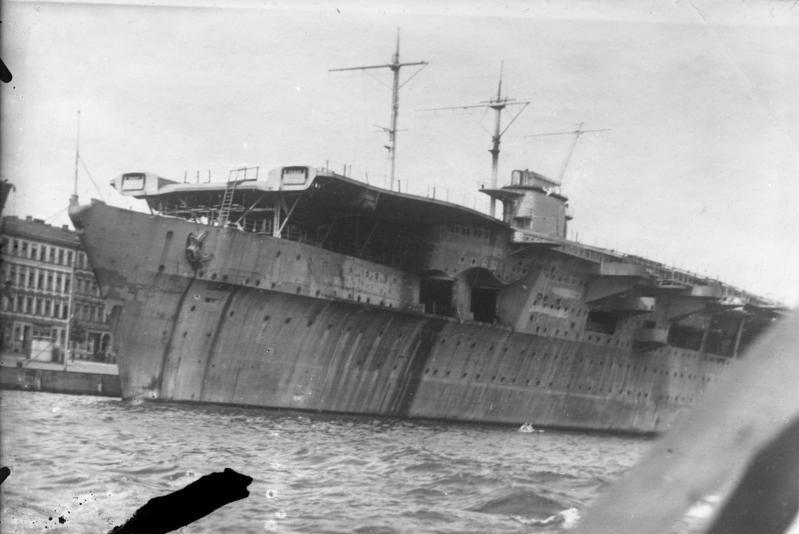
Graf Zeppelin in Stettin 8.12.1938
Norway
The first was linked to the conquest of Norway in April 1940. Whereas priorities to defend the Norwegian coastline asked for coastal guns and anti-aircraft batteries, Raeder also argued that fitting out the ship with the planned fire control system (just sold to USSR) and final guns would take another ten months. Therefore, Hitler suspended work on the aircraft carrier, and all the planned guns and FLAK artillery were diverted to Norway.
Moving from place to place
In July 1940, the Graf Zeppelin hulk was towed from Kiel to Gotenhafen (Gdynia) for future completion. However, when war erupted in the summer of 1941 with the Soviet Union, the ship was towed again this time to Stettin, out of reach of Soviet aviation. This further complicated a hypothetical completion as teams and materials were simply not there. By November, the ship was moved again to Gotenhafen as the German advance pushed back the Soviets and the ship could be moved forward while staying out of harm’s way. She lay there as a storeship for timber.
In April 1942, a meeting between Hitler and Raeder pushed the project again out of obscurity as operations clearly showed the usefulness of such a type of capital ship. Work resumed on 13 May 1942, with Hitler’s authorization. Raeder wanted newer planes, but Göering had him rebuffed due to the meager industrial resources of a hard-pressed Luftwaffe then, and thus he was forced to stick to the initially planned provision of modified planes while the training of new pilots resumed at Travemünde. But since the planes were heavier than the 1938 versions, numerous design changes had to be made.
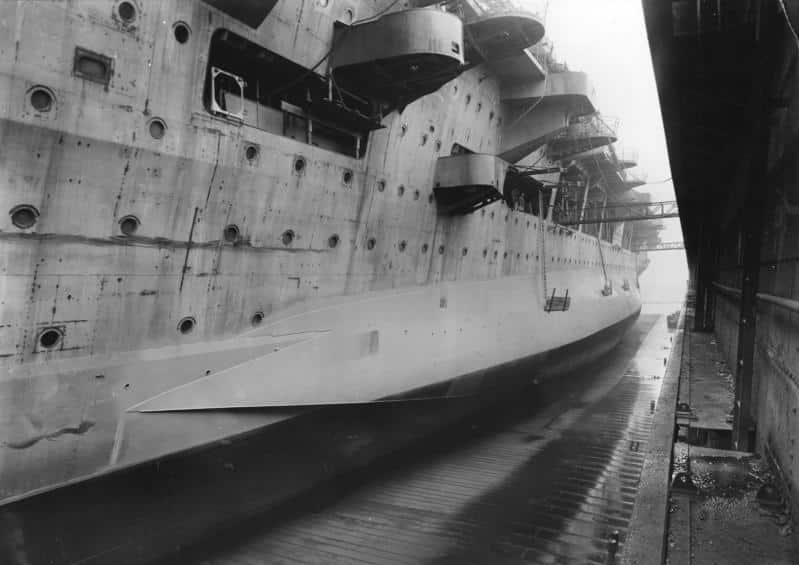
In Kiel’s drydock 24.3.43 (Bundesarchiv)
Catapults were needed for the modernization, along with stronger winches for the arrestor system, a stronger flight deck, elevators, hangar floors, and newly updated radars and fire control systems. Whatsmore, new radio equipment, an armored fighter director cabin mounted and new reinforced main mast, a better-armored bridge, a new curved funnel cap, an all-quad Flakvierling 38 guns compliment, and finally additional bulges were fitted to improve stability on a ship that passed from 26.931 tonnes to 28.090 and then nearly 30,000 for this 1942 final design.
While an ambitious end date, the Kriegsmarine planned completion for April 1943. As sea trials were planned to begin in the summer of that year, Chief Engineer Wilhelm Hadeler was reassigned to the project and worked on a 26-knots capable power plant. Service was estimated to start in the winter of 1944. Graf Zeppelin was back at Kiel on 5 December 1942 and placed on a drydock for this completion.
Final Cancellation
Although light seemed to be at reach in the tunnel for the unfortunate ship, fate turned again as Hitler became so disenchanted with the surface fleet that in late January 1943 he ordered in one of his famous hot-headed decisions that all large surface ships had to be scrapped and the material recycled to built U-boats. Raeder was relieved of command and Dönitz was appointed as the C-in-C. Little work was done when the hull in April was towed again to Gotenhafen but she was eventually moored at a back-water wharf in the Pengintz River near Stettin.
She lay there without much progress but a guarding 40-man custodial crew until the Soviets reached her in April 1945. The crew scuttled the ship by opening the Kingston valves, preventing any attempt to tow her while demolition and depth charges were placed and detonated by order At 6pm on 25 April 1945. What about her sister ship? Design “B” was ordered at Germaniawerft but if work started she was canceled in March 1940 and broken up. It was envisioned she would be modified during construction after the changes made to the A design.
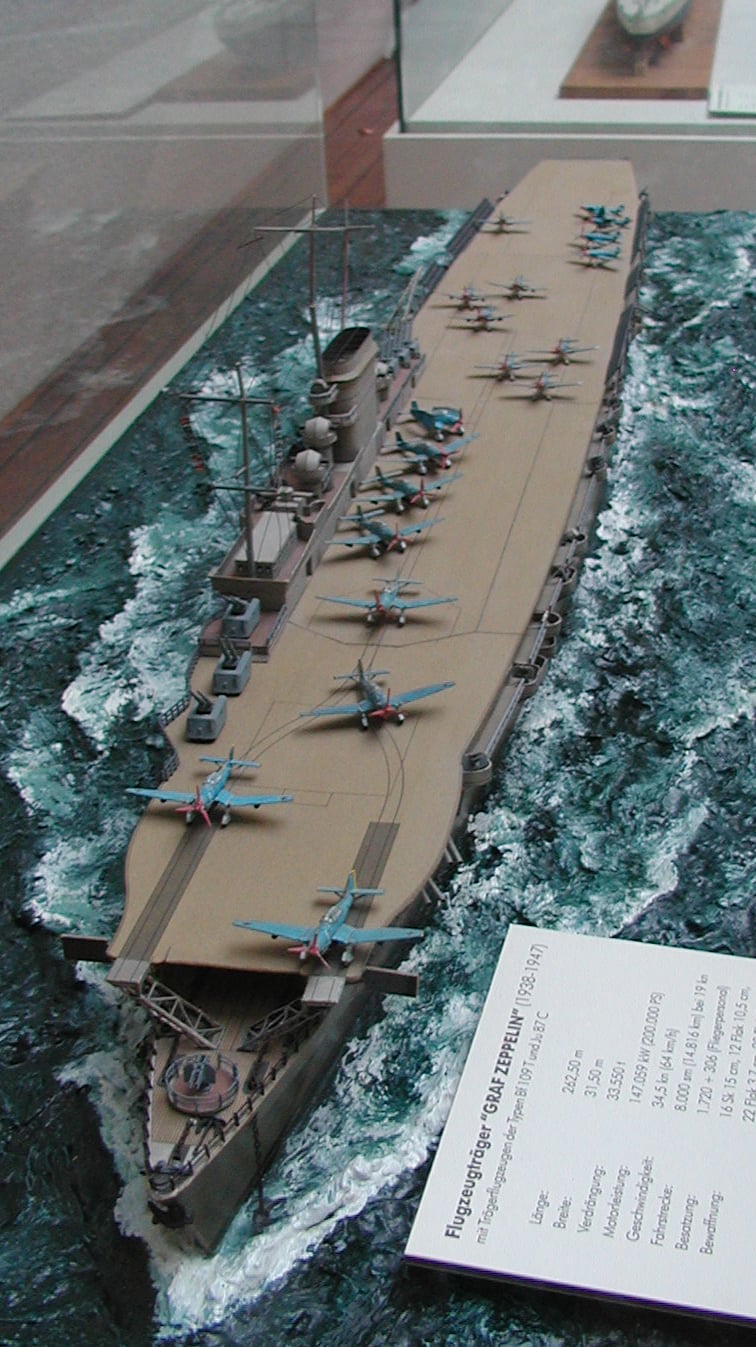
Model of the ship at the Aeronauticum, German maritime aircraft museum
A controversial fate after the war
Given to the USSR after the war by the allied tripartite commission she was designated a “Category C” ship, unable to be retrieved and operated, and therefore had to be broken up. But she was ultimately refloated in March 1946, then towed to Leningrad, and according to historian Erich Gröner struck a mine en route off the coast of Finland. According to other sources, she survived the hit, made it to Leningrad, and was to be broken up in 1948–1949.
However, declassified Soviet records revealed that on 14 August Graf Zeppelin was towed into Swinemunde harbor to be sunk in a series of controlled explosions and torpedo hits at Swinemunde harbor. Her exact position was rediscovered on 12 July 2006 by the Polish research vessel RV St. Barbara which made a three days dive campaign and confirmedthe wreck’s identity. All that’s left from this ship is the shipyard’s model, now displayed at the Aeronauticum, a German maritime aircraft museum located in Nordholz (close to Cuxhaven).
Links/src
Conway’s all the world fighting ships 1921-1947.
trumpeter-china.com/Uploads/201701/586def418cc50.jpg (what-if livery)
wardrawings.be/WW2/Images/2-Airplanes/Axis/1-Germany/7-Aeronaval/Ju-87V-25/p1.jpg
(Planned torpedo-bomber v25 by Vincent Bourguignon)
en.wikipedia.org/wiki/German_aircraft_carrier_Graf_Zeppelin
axis carriers on scribd.com/

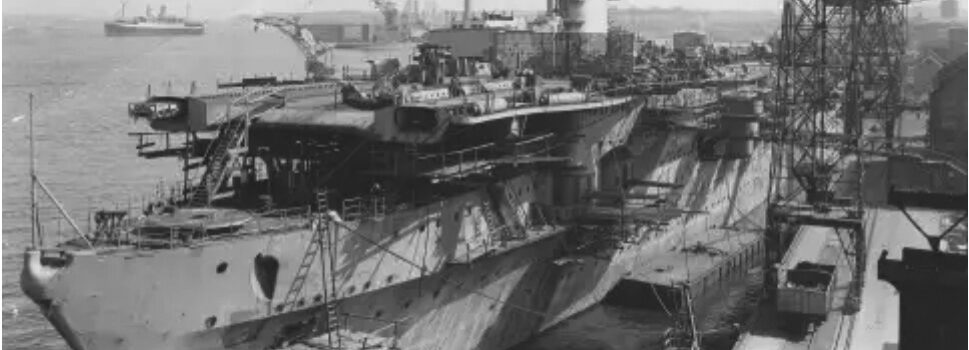
 Latest Facebook Entry -
Latest Facebook Entry -  X(Tweeter) Naval Encyclopedia's deck archive
X(Tweeter) Naval Encyclopedia's deck archive Instagram (@navalencyc)
Instagram (@navalencyc)





 French Navy
French Navy Royal Navy
Royal Navy Russian Navy
Russian Navy Armada Espanola
Armada Espanola Austrian Navy
Austrian Navy K.u.K. Kriegsmarine
K.u.K. Kriegsmarine Dansk Marine
Dansk Marine Nautiko Hellenon
Nautiko Hellenon Koninklije Marine 1870
Koninklije Marine 1870 Marinha do Brasil
Marinha do Brasil Osmanlı Donanması
Osmanlı Donanması Marina Do Peru
Marina Do Peru Marinha do Portugal
Marinha do Portugal Regia Marina 1870
Regia Marina 1870 Nihhon Kaigun 1870
Nihhon Kaigun 1870 Preußische Marine 1870
Preußische Marine 1870 Russkiy Flot 1870
Russkiy Flot 1870 Svenska marinen
Svenska marinen Søværnet
Søværnet Union Navy
Union Navy Confederate Navy
Confederate Navy Armada de Argentina
Armada de Argentina Imperial Chinese Navy
Imperial Chinese Navy Marinha do Portugal
Marinha do Portugal Mexico
Mexico Kaiserliche Marine
Kaiserliche Marine 1898 US Navy
1898 US Navy Sovietskiy Flot
Sovietskiy Flot Royal Canadian Navy
Royal Canadian Navy Royal Australian Navy
Royal Australian Navy RNZN Fleet
RNZN Fleet Chinese Navy 1937
Chinese Navy 1937 Kriegsmarine
Kriegsmarine Chilean Navy
Chilean Navy Danish Navy
Danish Navy Finnish Navy
Finnish Navy Hellenic Navy
Hellenic Navy Polish Navy
Polish Navy Romanian Navy
Romanian Navy Turkish Navy
Turkish Navy Royal Yugoslav Navy
Royal Yugoslav Navy Royal Thai Navy
Royal Thai Navy Minor Navies
Minor Navies Albania
Albania Austria
Austria Belgium
Belgium Columbia
Columbia Costa Rica
Costa Rica Cuba
Cuba Czechoslovakia
Czechoslovakia Dominican Republic
Dominican Republic Haiti
Haiti Hungary
Hungary Honduras
Honduras Estonia
Estonia Iceland
Iceland Eire
Eire Equador
Equador Iran
Iran Iraq
Iraq Latvia
Latvia Liberia
Liberia Lithuania
Lithuania Mandchukuo
Mandchukuo Morocco
Morocco Nicaragua
Nicaragua Persia
Persia San Salvador
San Salvador Sarawak
Sarawak Uruguay
Uruguay Venezuela
Venezuela Zanzibar
Zanzibar Warsaw Pact Navies
Warsaw Pact Navies Bulgaria
Bulgaria Hungary
Hungary

 Bundesmarine
Bundesmarine Dutch Navy
Dutch Navy Hellenic Navy
Hellenic Navy Marina Militare
Marina Militare Yugoslav Navy
Yugoslav Navy Chinese Navy
Chinese Navy Indian Navy
Indian Navy Indonesian Navy
Indonesian Navy JMSDF
JMSDF North Korean Navy
North Korean Navy Pakistani Navy
Pakistani Navy Philippines Navy
Philippines Navy ROKN
ROKN Rep. of Singapore Navy
Rep. of Singapore Navy Taiwanese Navy
Taiwanese Navy IDF Navy
IDF Navy Saudi Navy
Saudi Navy Royal New Zealand Navy
Royal New Zealand Navy Egyptian Navy
Egyptian Navy South African Navy
South African Navy






























 Ukrainian Navy
Ukrainian Navy dbodesign
dbodesign